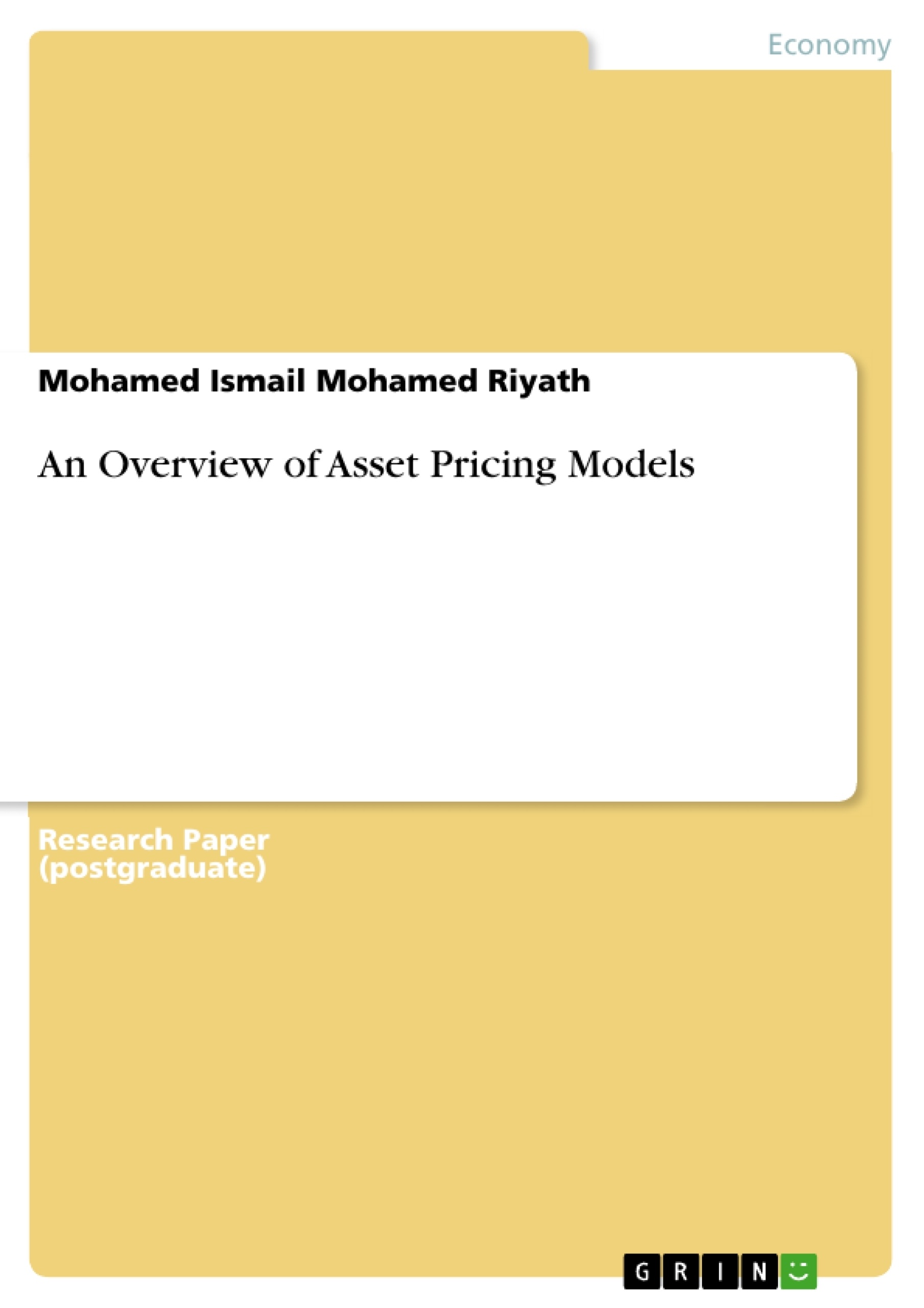The term financial market describes any marketplace where lenders, i.e. those who have excess fund, and borrowers, i.e. those who need funds, meet together for an exchange of instruments such as equities, bonds, currencies and derivatives. The lenders in the financial market are called investors who buy financial instruments. The investors invest their fund to maximize their wealth.
In reality investors are unable to achieve their objectives at all due to poor performance of respective stock and the market conditions when they are investing in equities. The reason could be the assets may underpriced or overpriced when making investment decisions. If the investors are priced correctly for the asset by considering all relevant factors which are affecting the value, they can enjoy normal profit by appropriately pricing the asset in an efficient market. It has always been the challenge of explaining the decision process of the investors in the stock market. In this context, the behavior of investor has a close relationship with the investment decisions and the way of enriching.
The rate of return and its determinations are the major issues in Finance. The rate of return is one of fundamental criteria for allocation of resources and analysis of risk and return. Their importance can be observed in the field of corporate and personal finance when define the viability of an investment and making investment decisions. Stock returns is always be considered as the principal point when investors going to put their money in financial market.
More profit have been involved in higher risk, and vice versa. Investors should take into account their decision to invest their money in accordance with their risk-taking abilities. Many theories and models have developed to guide investors in measuring their proper risk for a given level of return, which will help investors to take a decision easier. All such theories and models unable practiced in all times in different markets. Anomalies could occur in all different conditions of the market (Ramdy 2011).
Inhaltsverzeichnis (Table of Contents)
- CHAPTER ONE: INTRODUCTION
- CHAPTER TWO: CAPM
- THE MODERN PORTFOLIO THEORY
- DIVERSIFICATION
- SELECTION OF THE OPTIMAL PORTFOLIO
- SELECTION OF THE OPTIMAL PORTFOLIO
- OPTIMAL PORTFOLIO SELECTION AND THE RISK FREE ASSET
- A RISK MEASURE FOR THE CML
- THE CAPITAL ASSET PRICING MODEL: EXPECTED RETURN AND RISK
- THE SECURITY MARKET LINE (SML)
- THE MARKET BETA
- CHAPTER FOUR: THREE FACTOR MODEL
- CHAPTER FIVE: FOUR FACTOR MODEL
- CHAPTER SIX: REWARD BETA MODEL
Zielsetzung und Themenschwerpunkte (Objectives and Key Themes)
This text aims to provide an overview of the theories and models used in financial markets to explain asset pricing, specifically focusing on the relationship between risk and return. It explores the evolution of these models, from the foundational Modern Portfolio Theory (MPT) to more recent multi-factor models.
- The relationship between risk and return in financial markets.
- The application of portfolio theory and asset pricing models in investment decision-making.
- The evolution of asset pricing models, from the Capital Asset Pricing Model (CAPM) to multi-factor models.
- The role of diversification and risk management in portfolio construction.
- The impact of investor behavior and market conditions on asset prices.
Zusammenfassung der Kapitel (Chapter Summaries)
- CHAPTER ONE: INTRODUCTION: This chapter provides an introduction to the financial market and the role of investors in maximizing their wealth. It highlights the challenge of explaining investor behavior and the importance of understanding risk and return in investment decisions.
- CHAPTER TWO: CAPM: This chapter delves into the Modern Portfolio Theory (MPT) and its key concepts, including mean-variance analysis, diversification, and portfolio optimization. It explains how investors can select optimal portfolios based on their risk tolerance and return expectations.
Schlüsselwörter (Keywords)
This text explores key concepts in finance, including asset pricing, risk and return, portfolio theory, diversification, Capital Asset Pricing Model (CAPM), multi-factor models, and investment decision-making. The focus is on understanding the theoretical frameworks and empirical evidence related to these concepts, providing insights into the behavior of financial markets.
- Quote paper
- Mohamed Ismail Mohamed Riyath (Author), 2015, An Overview of Asset Pricing Models, Munich, GRIN Verlag, https://www.grin.com/document/310573



